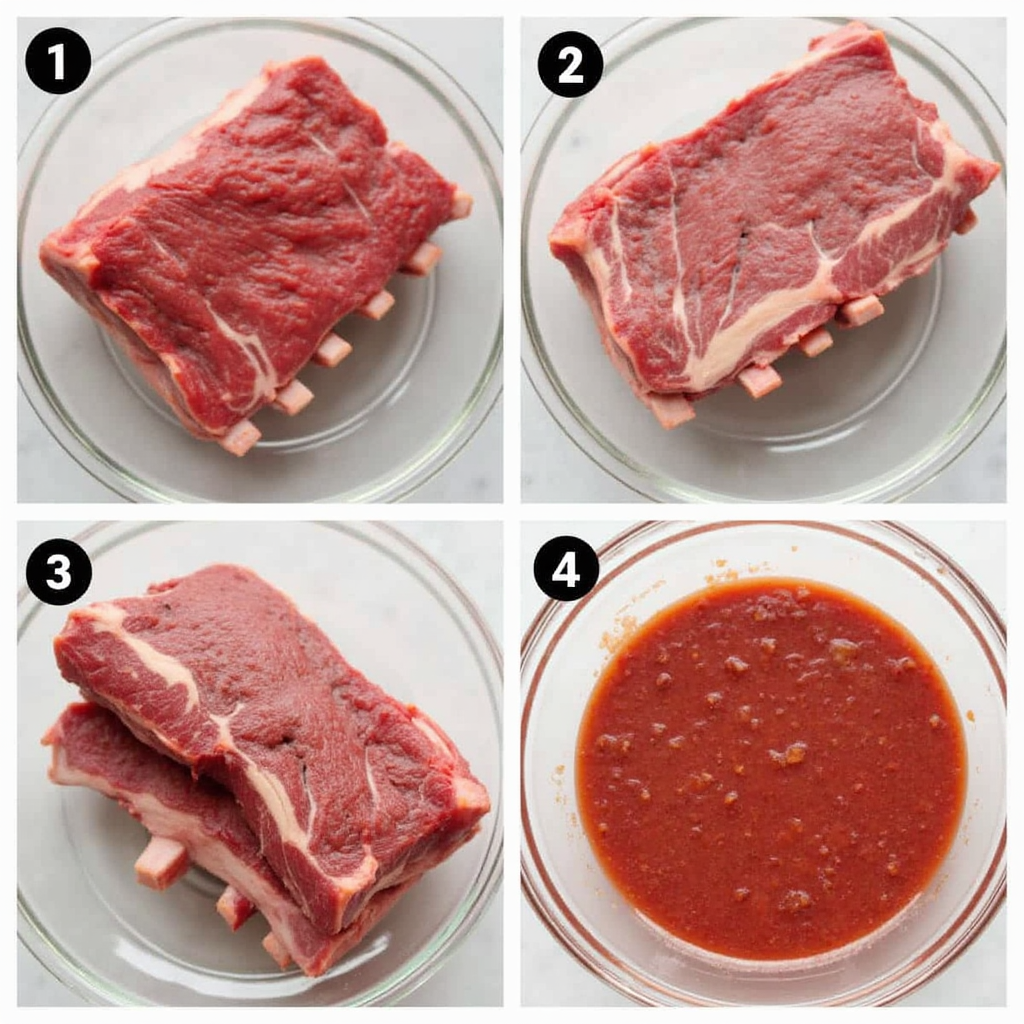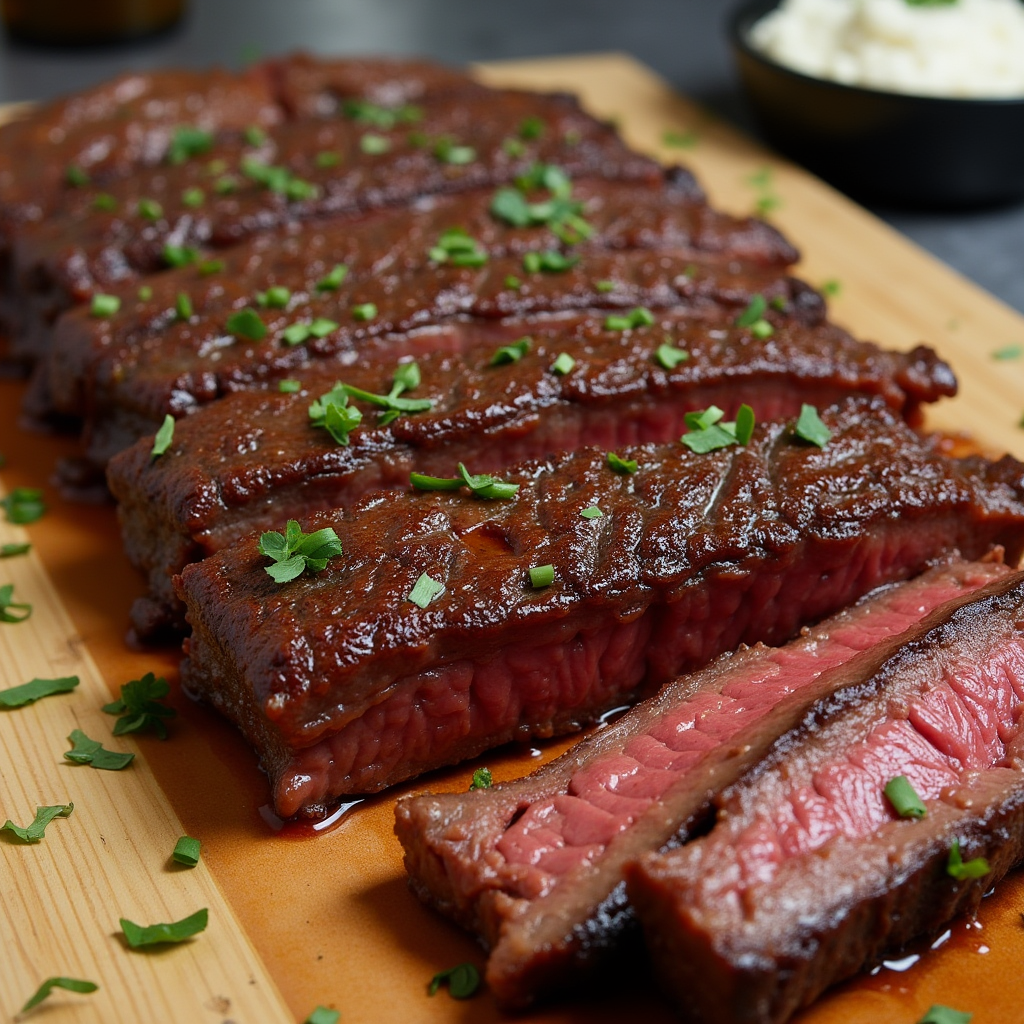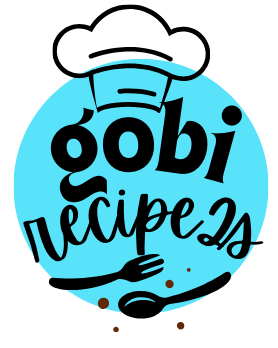Few dishes satisfy a meat lover’s craving like juicy beef ribs. Their rich marbling and deep flavor make them a favorite for barbecues, cookouts, and family gatherings. Whether slow-smoked, grilled to perfection, or oven-braised, the right preparation ensures a tender, flavorful experience.
Cooking juicy beef ribs requires more than just seasoning and heat; the cut, preparation, and cooking method all influence the final result. Mastering these elements ensures every bite is packed with moisture and deep, beefy flavor.
This guide covers everything from selecting the best cuts to achieving the perfect juicy beef ribs. By understanding key techniques and essential ingredients, you’ll have the knowledge to transform a simple rack of ribs into an unforgettable meal. Let’s dive into the details that will make your ribs the highlight of any gathering.
Types of Beef Ribs
Not all juicy beef ribs are the same. The variety of beef ribs determines the best cooking method and the texture of the final dish. Understanding the differences allows for better meal planning and cooking execution.
The most common types of juicy beef ribs include:
- Plate Short Ribs – These are among the richest and meatiest ribs, offering deep marbling and intense beef flavor. They are best suited for smoking and braising.
- Chuck Short Ribs – Slightly smaller than plate ribs but equally flavorful, these ribs have a good balance of meat and fat.
- Back Ribs – These come from the upper part of the rib cage near the spine. They contain less meat but absorb marinades and smoke well.
- English-Cut Ribs – These are cut parallel to the bone, making them ideal for slow cooking in stews or braising liquids.
Choosing the right type of juicy beef ribs depends on the desired cooking style and flavor profile. Plate and chuck ribs work best for smoking, while back ribs shine on the grill.
Best Cuts for Juicy Ribs
The success of juicy beef ribs starts with selecting the right cut. Not all ribs are created equal, and knowing what to look for ensures a tender and flavorful meal.
- Marbling Matters – More intramuscular fat means richer flavor and better moisture retention.
- Meat-to-Bone Ratio – Opt for ribs with thick, even layers of meat to ensure each bite is satisfying.
- Freshness and Color – Vibrant red meat with firm white fat indicates quality ribs. Avoid ribs with excessive liquid in the packaging, as they may be less fresh.
For juicy beef ribs, plate short ribs are the gold standard due to their fat content and meatiness. However, back ribs provide a leaner option with a slightly different texture. Regardless of the choice, proper cooking techniques ensure optimal tenderness.
Essential Ingredients for Flavorful Ribs

Creating juicy beef ribs relies on more than just great meat. The right combination of seasonings, marinades, and sauces enhances natural flavors and adds depth.
Key Ingredients for Seasoning:
- Salt and Black Pepper – A classic foundation that enhances the beef’s natural richness.
- Garlic Powder and Onion Powder – These add a subtle umami depth to the seasoning blend.
- Smoked Paprika – Introduces a mild smokiness, perfect for grilling and smoking.
Marinades and Binders:
- Mustard or Olive Oil – Helps seasoning adhere and creates a flavorful crust.
- Apple Cider Vinegar – Tenderizes the meat while balancing richness.
- Soy Sauce or Worcestershire Sauce – Adds depth with umami undertones.
Finishing Sauces:
- Barbecue Sauce – A blend of sweet, tangy, and smoky flavors enhances grilled ribs.
- Beef Au Jus – Ideal for smoked or braised ribs, keeping them moist and rich.
By balancing salt, acidity, and sweetness, these ingredients bring out the best in juicy beef ribs, making every bite a flavor-packed experience.
How to Prep Beef Ribs for Cooking
Proper preparation is crucial for achieving juicy beef ribs. Without the right prep work, even the best ribs can turn out tough or bland.
- Trim Excess Fat – While some fat enhances flavor, too much can create an unpleasant texture. Aim to leave a thin layer for moisture retention.
- Remove the Membrane – The silver skin on the bone side prevents seasoning absorption and makes ribs chewy. Use a knife to lift a corner, then pull it off using a paper towel for grip.
- Apply a Binder – Brushing ribs with mustard, oil, or Worcestershire sauce helps seasonings stick.
- Generously Season – Coat the ribs evenly, ensuring all surfaces are covered. Let them rest for at least 30 minutes, or refrigerate overnight for deeper flavor.
A well-prepped rack of juicy beef ribs sets the foundation for a successful cook. The time invested in trimming, seasoning, and resting results in superior tenderness and taste.
Best Cooking Methods for Beef Ribs
The cooking method plays a significant role in achieving juicy beef ribs. Each technique offers a unique texture and flavor profile.
Top Cooking Techniques:
- Smoking – The low-and-slow method develops deep smoky flavors while maintaining moisture.
- Grilling – Direct and indirect heat create a flavorful crust while locking in juices.
- Braising – Cooking ribs in liquid at a low temperature results in fall-off-the-bone tenderness.
- Oven Roasting – A controlled environment ensures even cooking and can mimic slow-smoked results.
For the juiciest results, smoking and grilling provide unbeatable texture and flavor. However, braising and roasting offer excellent alternatives for controlled indoor cooking.
Smoked Beef Ribs: Step-by-Step Guide
Smoking juicy beef ribs infuses them with rich, wood-fired flavor while breaking down connective tissue for unmatched tenderness.
Steps to Perfect Smoked Ribs:
- Preheat the Smoker – Set the temperature to 225°F for optimal slow cooking.
- Select the Right Wood – Hickory, oak, or mesquite add bold flavors, while fruit woods provide a milder touch.
- Season Generously – Ensure an even coating of spices, letting the ribs rest before smoking.
- Smoke Low and Slow – Place ribs bone-side down and maintain consistent heat for 5-7 hours.
- Spritz for Moisture – Every hour, spray with apple juice, cider vinegar, or broth to prevent drying out.
- Check for Doneness – When ribs reach 200°F internally and bones wiggle freely, they are ready to serve.
Smoked juicy beef ribs reward patience with incredible texture and depth of flavor, making them a show-stopping dish.
Grilled Beef Ribs: The Perfect Char
Grilling juicy beef ribs delivers a crisp exterior while sealing in moisture for a balanced bite.
Grilling Steps for Perfect Ribs:
- Preheat the Grill – Set up a two-zone fire with direct and indirect heat.
- Sear Over Direct Heat – Grill ribs for 3-5 minutes per side to develop a flavorful crust.
- Move to Indirect Heat – Slow-cook at a lower temperature (300°F) for even tenderness.
- Use a Basting Sauce – Brush with barbecue sauce or a marinade to keep them moist.
- Check Temperature – When ribs reach 195-200°F, they’re ready to serve.
By combining high-heat searing with gentle cooking, grilled juicy beef ribs achieve the perfect balance of crisp texture and succulent meat.
Mastering Juicy Beef Ribs: A Complete Guide

Oven-Baked Beef Ribs: Fall-Off-The-Bone Tenderness
For those without a smoker or grill, oven-baking offers a simple yet effective way to achieve juicy beef ribs with exceptional tenderness. When cooked at a low temperature for an extended period, the ribs become irresistibly soft, with flavors that rival any barbecue joint.
Steps for Perfect Oven-Baked Beef Ribs:
- Preheat the Oven – Set it to 275°F to ensure slow, even cooking.
- Prepare the Ribs – Trim excess fat, remove the membrane, and apply a flavorful dry rub.
- Wrap in Foil – Tightly sealing the ribs locks in moisture, preventing them from drying out.
- Bake Low and Slow – Allow 3-4 hours of cooking time until the meat reaches 200°F internally.
- Caramelize with Sauce – During the last 15 minutes, brush the ribs with barbecue sauce and broil until slightly charred.
Oven-baked juicy beef ribs are perfect for those who crave tender, fall-apart meat without the hassle of outdoor cooking. The combination of slow heat and careful seasoning ensures a dish packed with flavor and succulence.
Sous Vide Beef Ribs: Restaurant-Quality Perfection
Sous vide cooking takes juicy beef ribs to another level by using precise temperature control to achieve unparalleled tenderness. This method locks in moisture, ensuring consistently flavorful results every time.
Steps to Sous Vide Beef Ribs:
- Season and Seal – Generously coat ribs with salt, pepper, and desired spices before vacuum-sealing them in a bag.
- Set the Temperature – Heat the sous vide bath to 155°F for tender yet structured ribs or 165°F for ultra-soft, fall-apart texture.
- Cook for 24-36 Hours – The extended cooking time allows collagen to break down without overcooking the meat.
- Sear for a Finishing Touch – After removing from the bag, quickly sear the ribs on a hot grill or pan to develop a flavorful crust.
- Glaze with Sauce – Brush with barbecue sauce or beef jus for an extra layer of richness.
With sous vide, juicy beef ribs achieve the perfect balance of tenderness and meaty bite. This technique ensures consistent results, making it ideal for those who demand precision in their cooking.
Best Side Dishes for Beef Ribs
Pairing juicy beef ribs with the right side dishes enhances the overall dining experience. The perfect accompaniment balances richness, adds texture, and provides contrast to the smoky or savory flavors of the ribs.
Top Side Dishes:
- Creamy Coleslaw – The crisp freshness of slaw cuts through the richness of beef ribs.
- Garlic Mashed Potatoes – Buttery, fluffy potatoes complement the deep beefy flavors.
- Grilled Corn on the Cob – A smoky char with a touch of sweetness pairs well with ribs.
- Mac and Cheese – The creamy, cheesy texture contrasts beautifully with smoky, tender meat.
- Baked Beans – Their smoky, slightly sweet profile enhances the flavors of juicy beef ribs.
- Pickled Vegetables – A tangy bite helps cleanse the palate between bites of rich beef.
Choosing the right side dishes ensures a well-rounded meal, making every bite of juicy beef ribs even more enjoyable.
Common Mistakes to Avoid
Achieving perfect juicy beef ribs requires attention to detail. Many home cooks make simple errors that lead to dry, tough, or underwhelming ribs.
Mistakes to Watch Out For:
- Skipping the Membrane Removal – Leaving it on results in tough, chewy ribs.
- Rushing the Cooking Process – Low and slow cooking is key to tenderness.
- Using Too Much Heat – High temperatures dry out the ribs rather than breaking down connective tissue.
- Not Seasoning Properly – Under-seasoned ribs lack depth, while over-salted ribs can be overpowering.
- Forgetting to Rest the Meat – Letting ribs sit for 10-15 minutes after cooking helps retain their juices.
Avoiding these common mistakes ensures juicy beef ribs with deep flavor and perfect texture every time.
Expert Tips for the Best Beef Ribs
Mastering juicy beef ribs requires both technique and patience. Following expert advice ensures consistently great results.
Pro Tips for Superior Beef Ribs:
- Choose the Right Cut – Opt for meaty, well-marbled ribs to guarantee tenderness.
- Dry Brine Overnight – Salting ribs ahead of time enhances flavor and helps retain moisture.
- Use a Meat Thermometer – Ribs are ready when they reach 200-205°F, ensuring proper collagen breakdown.
- Control Moisture During Cooking – Spritz ribs with apple juice or broth every hour to prevent dryness.
- Let the Bark Develop – Avoid wrapping too early when smoking to allow a flavorful crust to form.
These techniques separate ordinary ribs from exceptional juicy beef ribs, making them tender, flavorful, and perfectly cooked every time.
FAQs About Beef Ribs

Can you cook ribs in the oven?
Yes, you can absolutely cook ribs in the oven, and this method guarantees juicy beef ribs with incredible tenderness. First, preheat the oven to 275°F to allow for slow, even cooking. Then, season the ribs generously and wrap them in foil to lock in moisture. After baking for 3-4 hours, remove the foil and brush the ribs with barbecue sauce. Finally, broil them for a few minutes to create a flavorful caramelized crust. This approach ensures that oven-cooked ribs remain tender, juicy, and packed with flavor.
How to make BBQ beef ribs?
Making juicy beef ribs with a bold barbecue flavor requires the right seasoning, cooking method, and finishing sauce. Begin by removing the membrane and seasoning the ribs with a dry rub of salt, pepper, garlic powder, and smoked paprika. Next, choose a cooking method—smoke them low and slow, bake them in the oven, or grill them over indirect heat. During the last stage, baste the ribs with barbecue sauce and allow them to develop a caramelized glaze. Finally, let the ribs rest before serving to retain their juices and maximize tenderness.
What are oven-baked beef back ribs?
Oven-baked beef back ribs are a delicious and convenient way to prepare juicy beef ribs without needing a smoker or grill. These ribs come from the upper portion of the ribcage and contain less meat than short ribs, but they absorb seasoning beautifully. To cook them, first, season them well and wrap them in foil. Then, bake them at a low temperature (around 275°F) for several hours until they become tender. Once fully cooked, apply barbecue sauce and broil them briefly to enhance the flavor and texture. This method results in flavorful, fall-off-the-bone ribs perfect for any occasion.
What is a good BBQ rib?
A good BBQ rib should be tender yet slightly firm, packed with smoky, savory flavors, and coated with a perfectly caramelized glaze. First, it should have a well-balanced seasoning blend that enhances the natural beefiness. Second, it must be cooked low and slow, allowing the fat to render and the meat to absorb deep flavors. Lastly, it should have a rich, slightly sticky barbecue sauce that complements the smoky char. Whether smoked, grilled, or oven-baked, the best juicy beef ribs should offer a perfect combination of tenderness, flavor, and satisfying texture.
Conclusion
Cooking juicy beef ribs to perfection requires patience, technique, and quality ingredients. Whether you prefer the deep smokiness of slow-cooked ribs, the caramelized crust from grilling, or the controlled tenderness of sous vide, each method has its benefits. Avoiding common mistakes and pairing ribs with the right side dishes elevates the experience.
By following expert tips and refining your approach, you can consistently achieve juicy beef ribs that impress every time. Whether for a backyard barbecue, holiday feast, or weeknight dinner, these ribs remain a true showstopper, delivering rich, mouthwatering flavor in every bite.

